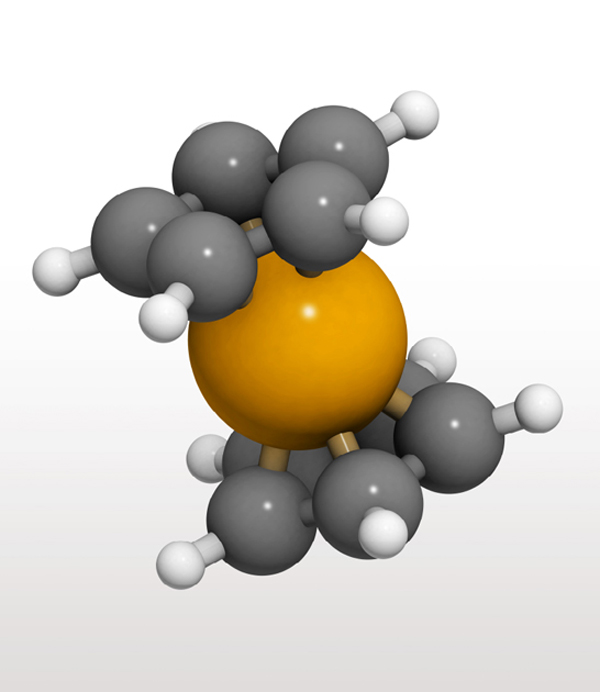1951
Ferrocene
Samuel A. Miller (1912–1970), Robert Burns Woodward (1917–1979), Geoffrey Wilkinson (1921–1996), Ernst Otto Fischer (1918–2007), Peter Ludwig Pauson (1925–2013), Thomas J. Kealy (1927–2012)
Two different research groups (chemists Peter Ludwig Pauson and Thomas J. Kealy in the U.S. and chemists Samuel A. Miller, John Tebboth, and John Tremaine in the U.K.) were investigating the reactions of a five-membered ring compound called cyclopentadiene in 1951 when, in the presence of iron salts, a new compound formed that was clearly not what anyone had planned. Both groups expected colorless liquid products, but this new material was a bright-orange, crystalline solid, which turned out to be a window into a new sort of chemical structure.
The molecule, named ferrocene, was found to contain one atom of iron for every two cyclopentadienes, but how these were arranged was a subject of great disagreement. Two eminent organic chemists, American Robert Burns Woodward and Englishman Geoffrey Wilkinson, proposed that the iron atom must be “sandwiched” between the cyclopentadienes. The bonding between the iron atom and the two rings was spread out evenly across both rings—a type of chemical bonding no one had yet thought of. This makes ferrocene the most perfectly balanced and stable example of the “metallocene” compounds—each cyclopentadiene gets enough extra electrons to be aromatic, and the iron atom completely fills its outer electron shell.
In Germany, chemist Ernst Otto Fischer had worked out the same structure, later completely confirmed by X-ray crystallography. He began to prepare similar compounds with other metals, as the ferrocene story set off a wave of organometallic chemistry research. Fischer and Wilkinson both received the 1973 Nobel Prize for their work.
Currently, metallocenes are used as industrial catalysts and as reagents for organic chemistry. It seems strange that such a widely applicable type of compound had been missed for so long, but it was revealed that cyclopentadiene distilled through an iron apparatus was known to clog the pipe with some worthless yellow-orange stuff. Thus, a Nobel Prize was scrubbed out with a brush and thrown away.
SEE ALSO Benzene and Aromaticity (1865), Coordination Compounds (1893), X-Ray Crystallography (1912), Unnatural Products (1982)

A digital model of a ferrocene molecule, showing the (relatively large) iron atom sandwiched between the flat cyclopentadienes.